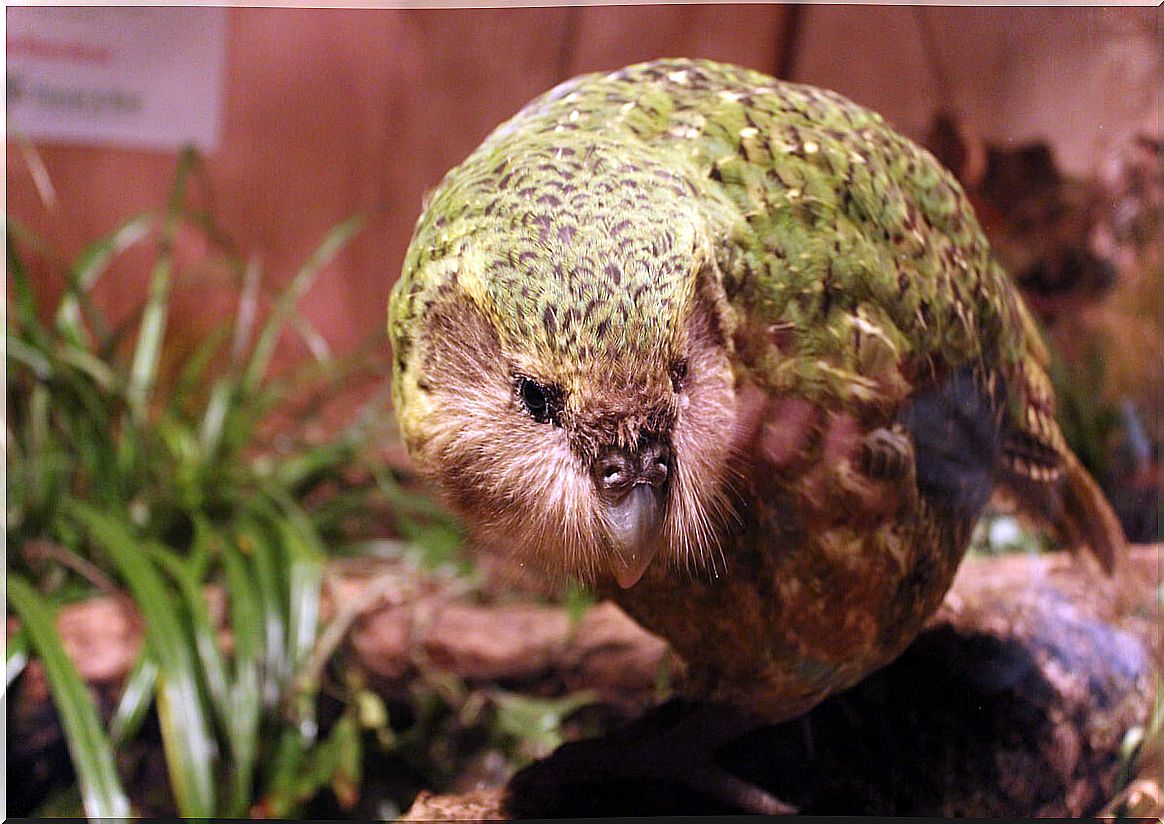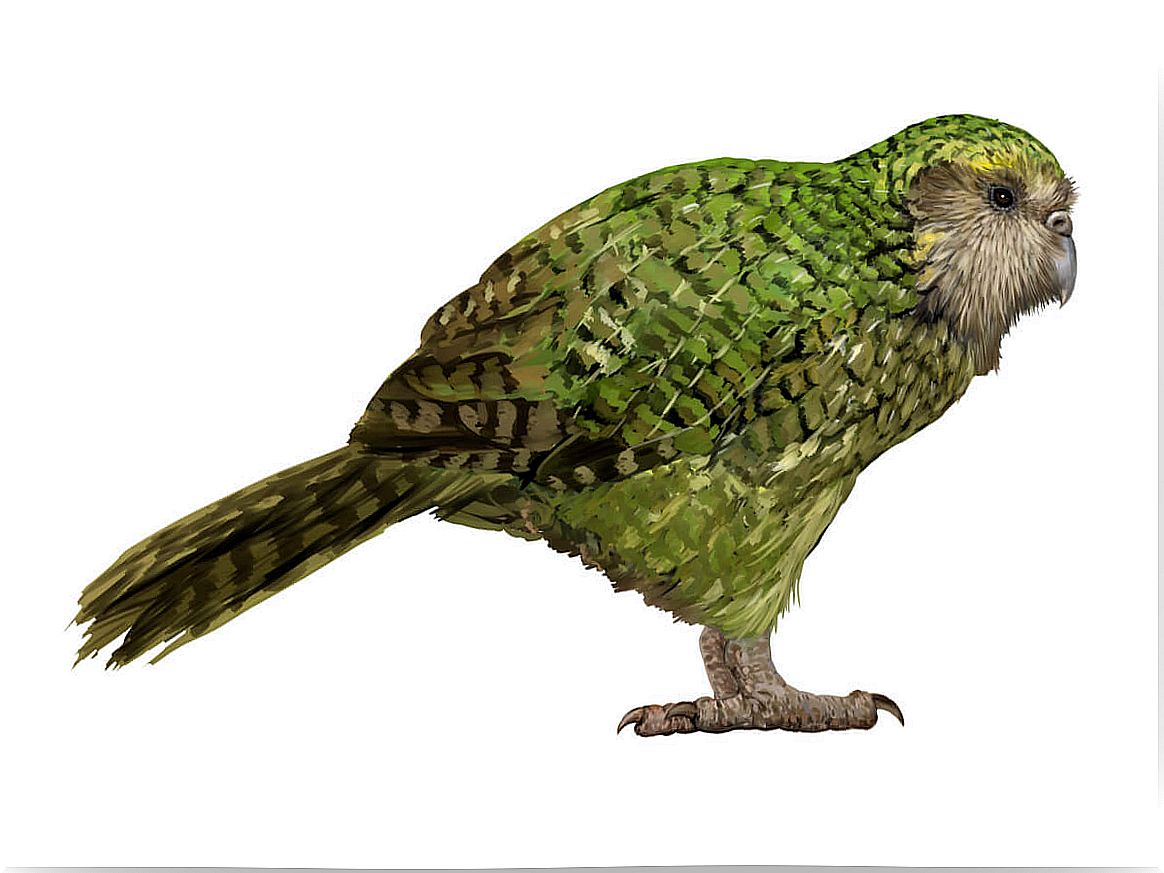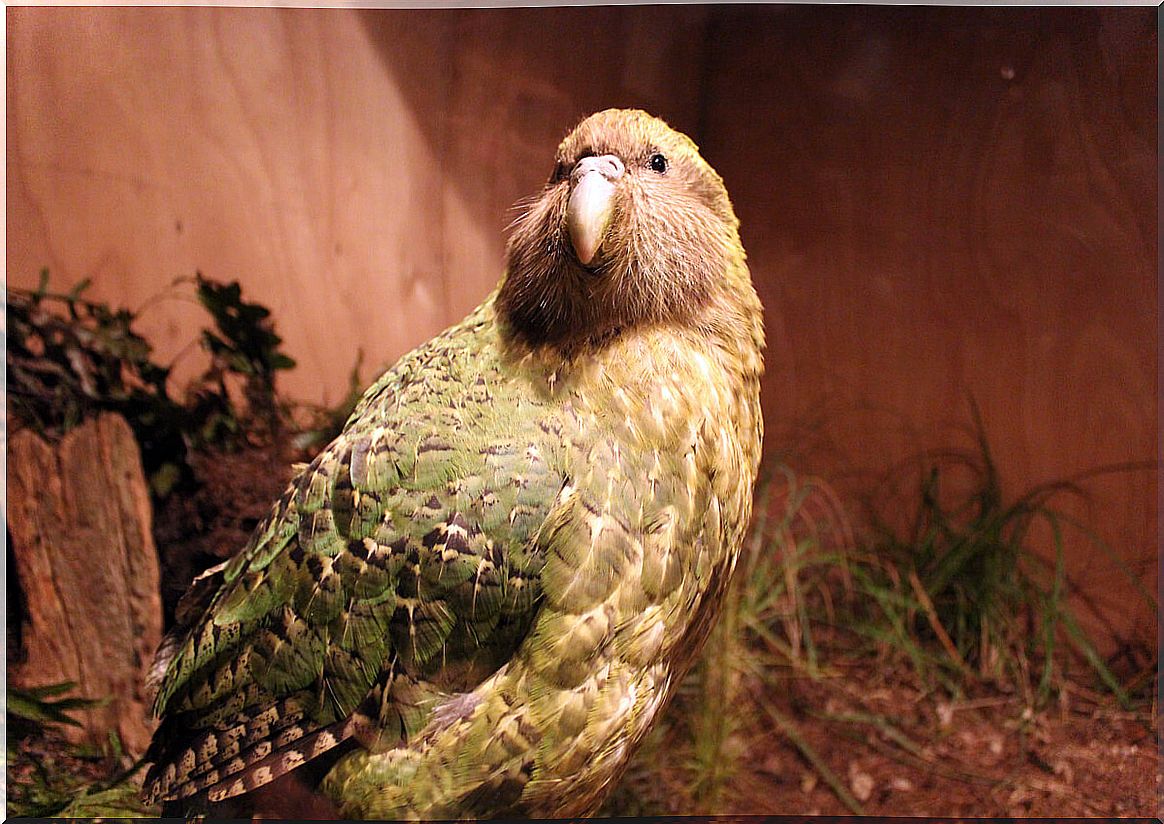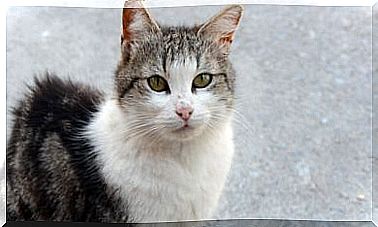Kakapo: New Zealand’s Bird Of The Year 2020

During the last quarter of 2020, the media reported the following news: the kakapo ( Strigops habroptilus ) has won the annual bird of the year competition held in New Zealand.
Although it may seem somewhat anecdotal, this bird houses many secrets that deserve to be made available to the public. In addition, events like this promote greater awareness at a global level about the vast number of beautiful and curious species that share the planet with us. If you want to know more about this fascinating animal, keep reading.
The kakapo: bird of 2020
The Bird of the Year organization has been promoting the Bird of the Year voting in New Zealand since 2005, using a vote counting procedure similar to that of a formal election.
This portal makes an open vote available to the public in which the inhabitants can choose up to five favorite birds, always in a specific order. After this, a series of elimination rounds are carried out by groups until, finally, the bird of the year is reached by popular vote.
The kakapo was victorious in 2020, but this was not his only triumph. This curious animal also took first place in 2008, since its friendly appearance and plump silhouette are charming even for the most skeptical.

Some curiosities about the kakapo
Beyond being the winner of this unusual competition, the kakapo has many more striking characteristics. Among them, we find the following:
- The kakapo is the only representative of its genus ( Strigops ), which is why it is considered genetically distant from other current birds.
- These animals are large and squat, as they reach 60 centimeters in height and 4 kilos in weight. Naturally, these proportions do not allow them to fly. Its wings serve only as balancing and supporting elements.
- Kakapos have an unusual sense of smell, an adaptation that is in keeping with their nocturnal lifestyle.
- As strange as it may sound, people who have been in contact with kakapos attest that they smell great. These animals emit a honeyed floral odor, which could correspond to certain chemical signals of unknown functions.
Kakapos are very special and delicate beings, as they reproduce every 2-4 years, they only occupy a very small area of New Zealand, the offspring can easily die and do not have effective anti-predatory mechanisms. All these factors make this species critically endangered.
At the edge of the abyss
In June 2020, a total of 213 live kakapos were recorded. They all carry radio transmitters and are regularly monitored, as New Zealand authorities and conservationists around the world do not want to risk losing this species forever.
Still, it appears that kakapo conservation efforts are paying off. For example, it is estimated that since 1990 the wild population has increased by a total of 50 individuals, an astronomical figure considering the number of total specimens.
Kakapos lack anti-predatory strategies because they simply did not need them in their natural environment. The human being has been the cause of its decline, since it has been the colonization of its environment that has almost caused its disappearance. Our species brings with it rodents, cats and many other domestic species that can decimate natural populations.

Caution and persistence
While kakapo preservation efforts are paying off, don’t relax. Its population number is so low that any natural disaster or disease could erase this species from the map forever, so you have to be optimistic but cautious at the same time.
Let’s hope that first place in this unique competition puts the kakapo on the radar of more public institutions, non-profit organizations and their participants. Any help or donation promotes the creation of conservation programs, without which keeping these species alive would be impossible.








